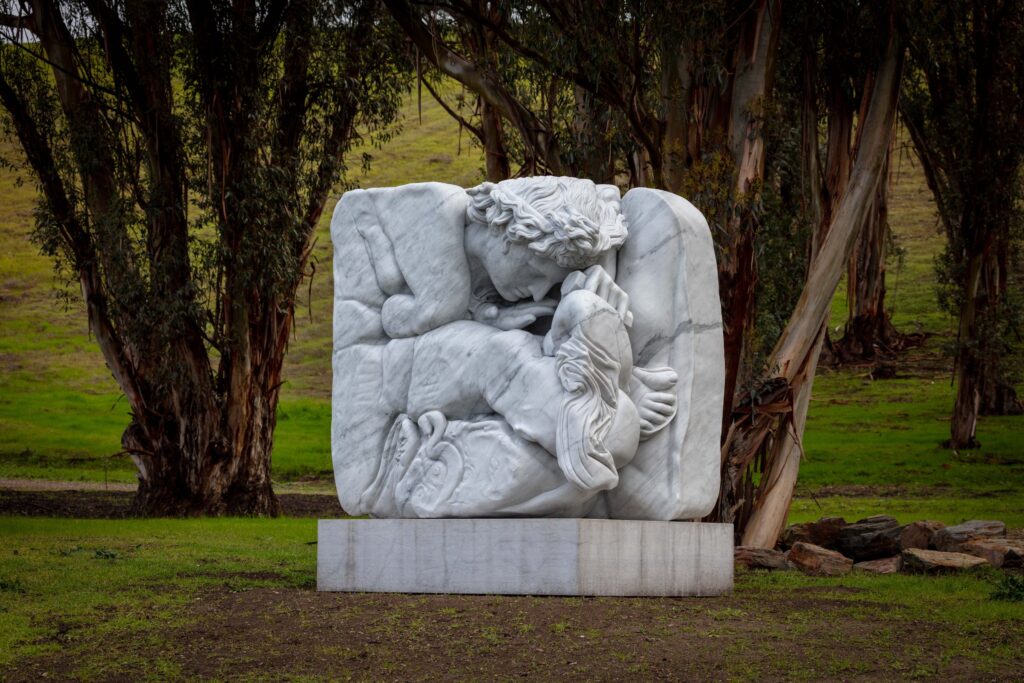
Introduction
The Middle Ages, often called the Age of Faith or the Medieval Period, continue to captivate contemporary imaginations. From Gothic architecture to illuminated manuscripts, the aesthetics of this time have made an undeniable impact on art and culture. Neo-Medievalism, a modern art movement drawing inspiration from these medieval themes, is a testament to this enduring appeal. By blending intricate patterns, mythical narratives, and ancient symbols with modern techniques, Neo-Medievalism bridges the past and present in ways that are deeply relevant to today’s audiences.
This resurgence isn’t just about nostalgia; it’s about reinterpreting medieval concepts to address modern issues, from environmental concerns to spiritual exploration. With its growing presence in galleries, homes, and even fashion, Neo-Medievalism offers a fresh perspective on the timeless interplay of history and creativity.
The Characteristics of Neo-Medieval Art
Neo-Medievalism is characterized by its use of Gothic elements, such as pointed arches, ribbed vaults, and intricate tracery, reimagined through modern lenses. Artists often incorporate bold metallics, stained glass effects, and tactile textures that mimic medieval craftsmanship.
Symbolism plays a crucial role in Neo-Medieval art, with common motifs including knights, castles, religious iconography, and allegorical themes. These elements evoke a sense of mystery and reverence, inviting viewers to contemplate the deeper meanings behind the works.
Moreover, Neo-Medievalism frequently employs mixed media, blending traditional materials like wood and stone with digital projections and LED lighting to create immersive experiences.
Leading Artists in Neo-Medievalism
Neo-Medievalism has gained traction, thanks to visionary artists who have embraced this movement.
1. Adam Parker Smith
Smith’s sculptural works reinterpret medieval reliquaries and artifacts with a humorous twist. His pieces, blending medieval forms with pop culture references, have fetched prices ranging from $50,000 to $150,000 at auctions.
2. Kehinde Wiley
Though widely known for his portraits, Wiley’s 2021 “Arms and Armor” series adopts Neo-Medieval themes, showcasing African figures in medieval knightly regalia. One piece from this series sold for over $500,000.
3. Maarten Baas
A contemporary designer who incorporates medieval motifs into furniture, Baas’ Gothic-inspired chairs and mirrors redefine craftsmanship. His unique pieces are popular among collectors, with some selling for upwards of $30,000.
Neo-Medievalism in Modern Design and Culture
Neo-Medieval aesthetics have transcended the realm of traditional art, influencing interior design, fashion, and entertainment.
Interior Design
In home décor, Neo-Medievalism has introduced a resurgence of Gothic arches, wrought iron fixtures, and rich, textured fabrics. Spaces inspired by this style often feature dim lighting and dramatic architectural details, offering a blend of comfort and mystery.
Fashion
Medieval-inspired collections have also made their way onto runways. Designers like Alexander McQueen have used chainmail fabrics and embroidered tunics, drawing clear lines to medieval sartorial traditions.
Pop Culture
Films, television series, and video games such as Game of Thrones and The Witcher owe much of their visual language to Neo-Medieval aesthetics, further embedding the style in mainstream culture.
Comparison to Other Art Movements
Neo-Medievalism bears similarities to earlier movements such as the Gothic Revival of the 18th century and the Pre-Raphaelite Brotherhood. However, it distinguishes itself by integrating contemporary themes and technologies.
While the Gothic Revival focused on architectural grandeur, Neo-Medievalism often prioritizes personal narratives and global issues. Unlike the Pre-Raphaelites, whose work was deeply rooted in romanticized medieval tales, Neo-Medievalism offers a more nuanced exploration of identity, heritage, and spirituality.
Why Neo-Medievalism is Gaining Popularity
The rise of Neo-Medievalism can be attributed to several factors:
Nostalgia and Escapism: In a fast-paced digital age, the allure of medieval tranquility and mysticism provides an appealing escape.
Sustainability: Many Neo-Medieval artworks emphasize craftsmanship and the use of natural materials, resonating with eco-conscious consumers.
Digital Amplification: Platforms like Instagram have brought medieval-inspired works to broader audiences, sparking widespread interest.
The Market for Neo-Medieval Art
The commercial market for Neo-Medievalism has seen significant growth, with auction houses reporting rising sales figures.
Notable Sales
The Knight’s Reverie by Adam Parker Smith: Sold for $120,000 at Christie’s.
Kehinde Wiley’s Saint Maurice: Sold for $750,000, a record-breaking figure for Neo-Medieval art.
A Maarten Baas Gothic dining set fetched $55,000 at Sotheby’s.
As collectors increasingly seek unique pieces with historical resonance, the market for Neo-Medievalism is expected to continue its upward trajectory.
Conclusion
Neo-Medievalism in art and design offers a captivating dialogue between past and present. By reimagining medieval themes through contemporary practices, it creates works that are both timeless and timely. Whether through evocative sculptures, immersive interiors, or thought-provoking paintings, this movement challenges us to reconnect with history in innovative ways. As its popularity grows, Neo-Medievalism is not only redefining creative boundaries but also solidifying its place as a cultural and commercial phenomenon.
For Inquiries and Exclusive Promotions:
Explore our curated offerings at Artists Breath.
Discover Our Exquisite Collection:
Immerse yourself in our distinguished selection of fine art at Artists Breath Collection.
Connect with Our Artists and Gallery:
For personalized assistance or to engage with our talented artists, please reach out at info@artistsbreath.com.
Stay Informed with Our Insights:
Subscribe to our Substack for the latest in art and culture at Artists Breath Substack.